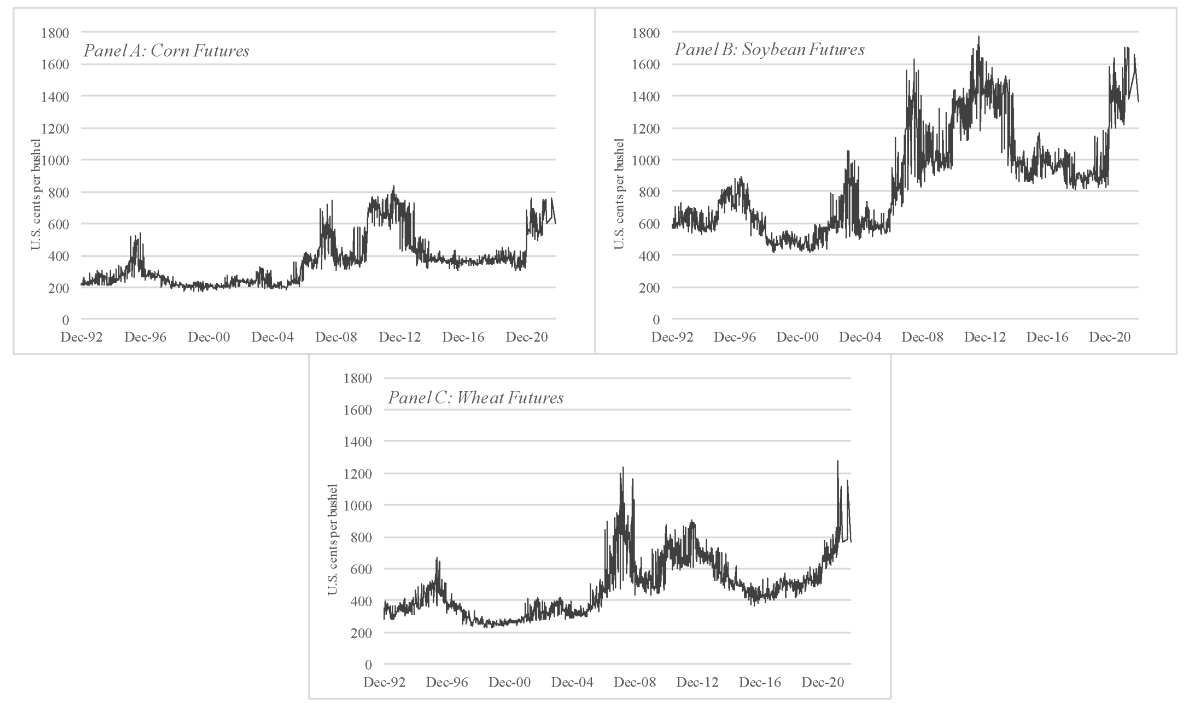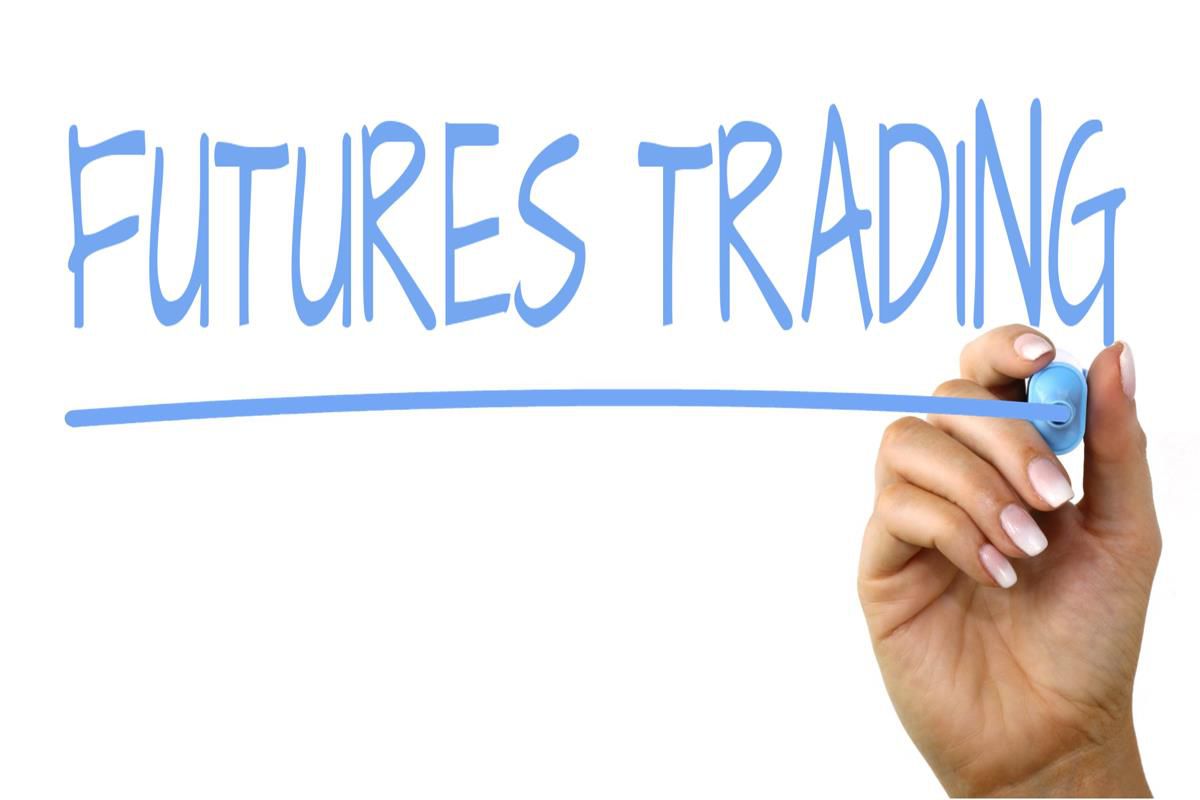Home>Finance>Explain How Option Contracts Differ From Futures Contracts


Finance
Explain How Option Contracts Differ From Futures Contracts
Published: December 23, 2023
Discover the key differences between option contracts and futures contracts in finance. Gain insights into their unique features, risk profiles, and trading strategies.
(Many of the links in this article redirect to a specific reviewed product. Your purchase of these products through affiliate links helps to generate commission for LiveWell, at no extra cost. Learn more)
Table of Contents
Introduction
When it comes to investing in the financial markets, there are various types of instruments available to traders and investors. Options contracts and futures contracts are two popular derivatives that give individuals the opportunity to speculate on price movements or hedge against potential risks. While both options and futures serve similar purposes, they have distinct differences in terms of contract structure, risk and reward profiles, pricing, market liquidity, settlement, and regulatory oversight.
Understanding the differences between option contracts and futures contracts is crucial for investors who want to navigate the complex world of derivatives effectively. In this article, we will explore the key distinctions between these two types of contracts and shed light on why they are used in different scenarios.
Before diving into the details, it is important to note that both options and futures fall under the broader category of derivatives. A derivative is a financial instrument that derives its value from an underlying asset or benchmark, such as stocks, commodities, currencies, or market indices. These instruments allow traders to speculate on price movements without owning the underlying asset.
Options and futures contracts are used for various purposes, including speculation, hedging, and arbitrage. Speculators use these instruments to profit from anticipated price movements, while hedgers employ them to mitigate risks associated with uncertain price fluctuations. Arbitrageurs participate in the market to exploit price inefficiencies between different derivatives or between derivatives and the underlying asset.
Now that we have set the stage, let’s delve into the definitions of option contracts and futures contracts and examine the key differences between them.
Definition of Option Contracts
An option contract is a derivative instrument that gives the holder the right, but not the obligation, to buy or sell the underlying asset at a predetermined price within a specified timeframe. The underlying asset can be stocks, commodities, currencies, or even indices. The predetermined price is known as the strike price, and the specified timeframe is called the expiration date.
There are two types of options: call options and put options. A call option provides the holder with the right to buy the underlying asset, while a put option gives the holder the right to sell the underlying asset. It’s important to note that option contracts are typically issued for a specific number of units of the underlying asset, often referred to as the contract size.
Option contracts provide flexibility to the holders by allowing them to choose whether to exercise the option or not. If the holder decides to exercise the option, they can either profit from buying or selling the underlying asset at a favorable price or incur a loss if the market moves against their position. If the holder chooses not to exercise the option, it will expire worthless at the end of the specified timeframe.
When purchasing an option contract, the buyer pays a premium to the seller, which is the price of the contract. The premium is influenced by various factors, including the current price of the underlying asset, the strike price, the expiration date, and volatility in the market. The buyer of an option contract has a limited risk, as they can only lose the premium paid, while the seller has unlimited risk if the market moves sharply in the opposite direction.
Option contracts are commonly used for various strategies, such as speculation, hedging, and income generation. Traders may speculate on the price direction of an underlying asset by buying or selling options, depending on their views. Hedgers, on the other hand, use options to protect their existing positions from unfavorable price movements. Options can also be employed to generate income by selling options and collecting premiums, with the understanding that the holder might exercise the option and the seller must fulfill the obligation.
Now that we have a clear understanding of option contracts, let’s move on to defining futures contracts and exploring the differences between the two.
Definition of Futures Contracts
A futures contract is a standardized agreement between two parties to buy or sell a specified quantity of an underlying asset at a predetermined price and date in the future. The underlying asset can include commodities, financial instruments, or even intangible assets like stock market indices. Unlike options contracts, futures contracts have an obligation for both parties to fulfill the terms of the contract.
One key feature of futures contracts is that they are traded on organized exchanges, such as the Chicago Mercantile Exchange (CME) or the New York Mercantile Exchange (NYMEX). These exchanges act as intermediaries, providing a centralized marketplace where buyers and sellers can transact futures contracts.
The terms of a futures contract are standardized, including the contract size, the quality of the underlying asset, the delivery date, and the delivery location. This standardization ensures liquidity and price transparency in the market, allowing participants to easily enter or exit positions.
When entering into a futures contract, the buyer agrees to purchase the underlying asset at the specified future date, known as the delivery or expiration date, at the predetermined price, known as the futures price or strike price. Conversely, the seller agrees to sell the underlying asset at the predetermined price when the contract expires.
Futures contracts are often used for hedging purposes, allowing market participants to manage price risks associated with the underlying asset. For example, a farmer may sell futures contracts on their crops to lock in a price and mitigate potential losses from price fluctuations. Speculators also participate in futures markets to profit from anticipated price movements without owning the physical asset.
Unlike options contracts, futures contracts are marked-to-market daily. This means that at the end of each trading day, the gains or losses on the contract are settled with the respective parties. If the contract has moved in the buyer’s favor, the seller is required to pay the profit. On the other hand, if the contract has moved against the buyer, they are responsible for covering the loss.
Now that we have defined futures contracts, let’s move on to exploring the differences in contract structure between options and futures.
Differences in Contract Structure
Options contracts and futures contracts have distinct differences when it comes to their contract structure. These differences mainly revolve around the rights and obligations of the parties involved, as well as the flexibility and customization of the contracts.
Firstly, options contracts give the holder the right, but not the obligation, to buy or sell the underlying asset. This means that the holder has the flexibility to choose whether to exercise the option or let it expire worthless. On the other hand, futures contracts entail an obligation for both the buyer and the seller to fulfill the terms of the contract at the expiration date. Both parties are required to buy or sell the underlying asset.
Secondly, options contracts have a specified timeframe known as the expiration date. Once the expiration date is reached, the option becomes worthless and no longer holds any value. In contrast, futures contracts also have an expiration date, but they can also be closed out before the expiration by taking an opposite position in the contract. This allows participants to exit their positions and avoid physical delivery.
Another difference lies in the customizable nature of options contracts. Options can be tailored to specific needs, with the ability to choose the strike price and expiration date that best suits the buyer’s strategy. Futures contracts, on the other hand, have standardized terms that are predetermined by the exchange. This lack of customization can limit the flexibility for traders and hedgers.
Furthermore, options contracts are traded on options exchanges, separate from futures exchanges. This separation allows traders to focus solely on options trading without being exposed to the complexities of futures contracts. Futures contracts, on the other hand, are traded on futures exchanges, where participants can engage in various types of futures trading beyond just options.
Overall, the contract structure of options and futures sets them apart in terms of the flexibility, obligations, and customization they offer to participants. These differences are important to consider when deciding which type of contract suits an investor’s specific goals and risk tolerance.
Now that we have examined the differences in contract structure, let’s move on to exploring the risk and reward profiles of options and futures contracts.
Risk and Reward Profile
Options contracts and futures contracts have different risk and reward profiles, which primarily stem from their contract structures and market dynamics.
Options contracts offer limited risk and unlimited reward for the buyers. The maximum risk for the buyer is the premium paid to acquire the contract. This means that even if the market moves against the buyer’s position, their losses are limited to the premium. On the other hand, the potential reward for the buyer is theoretically unlimited. If the market moves significantly in the buyer’s favor, they can profit from the price difference by exercising the option or selling the option contract at a higher price than the premium paid.
For sellers of options contracts, the risk profile is reversed. The sellers have unlimited risk potential and limited reward. As the sellers are obligated to fulfill the terms of the contract if the buyer exercises it, they are exposed to potential losses if the market moves against their position. The reward for sellers is limited to the premium received from the buyer at the inception of the contract.
Futures contracts, on the other hand, have a symmetrical risk and reward profile for both buyers and sellers. Since both parties are obligated to fulfill the terms of the contract, they face equal potential risks and rewards.
One important aspect of futures contracts is the concept of margin requirements. When trading futures, participants must deposit an initial margin, which is a fraction of the full contract value, to ensure they can meet their obligations. This margin acts as a form of collateral and protects against potential losses. However, if the market moves against a participant’s position, they may be required to post additional margin, known as maintenance margin, to maintain their position. This margin requirement can increase the risk exposure for participants in futures trading.
Overall, options contracts offer asymmetrical risk and reward profiles, providing buyers with limited risk and unlimited reward potential, while sellers face unlimited risk and limited rewards. In contrast, futures contracts offer a symmetrical risk and reward profile for both buyers and sellers, with equal potential for gains and losses.
Now that we have explored the risk and reward profiles, let’s move on to the differences in pricing and premiums between options and futures contracts.
Pricing and Premiums
Options contracts and futures contracts have different pricing mechanisms and premium structures. Understanding these differences is essential for investors looking to assess the cost and potential returns of these derivative instruments.
Options contracts are priced based on several factors, including the current price of the underlying asset, the strike price, the time to expiration, and the volatility of the market. These factors are taken into account using mathematical models, such as the Black-Scholes model, to determine the fair value of the option. The fair value of an option is commonly referred to as its theoretical price.
In addition to the theoretical price, options have a premium that market participants pay to purchase the contract. The premium is influenced by factors such as supply and demand dynamics, market sentiment, interest rates, and market volatility. When market conditions are favorable for options buyers, the premium tends to be higher. On the other hand, when market conditions are more favorable for options sellers, the premium tends to be lower.
Futures contracts, on the other hand, do not have a premium that needs to be paid at the inception of the contract. Instead, the pricing of futures contracts is based on the current spot price of the underlying asset and the cost of carry, which includes factors like storage costs, interest rates, and dividends (if applicable). The futures price is determined to ensure the absence of arbitrage opportunities between the futures market and the spot market.
It’s important to note that the pricing of futures contracts is influenced by supply and demand dynamics in the market. As trading volumes and open interest in futures contracts increase, the pricing may reflect the sentiment of market participants and expectations about the future price direction of the underlying asset.
Both options and futures contracts use the concept of intrinsic value to determine their pricing. Intrinsic value is the difference between the current price of the underlying asset and the strike price. If an option has intrinsic value, it means that exercising the option results in an immediate profit. For futures contracts, the absence of intrinsic value indicates that the contract is at-the-money (ATM).
Overall, the pricing of options and futures contracts is influenced by various factors. Options contracts have a premium that combines the theoretical value and market sentiment, while futures contracts are priced based on the spot price of the underlying asset and the cost of carry.
Now that we have explored the differences in pricing and premiums, let’s move on to the next section, which is market liquidity.
Market Liquidity
Market liquidity is an important factor to consider when trading options contracts and futures contracts. Liquidity refers to the ease with which an investor can enter or exit a position in the market without causing significant price movements.
Options contracts are traded on options exchanges, which provide a marketplace for buyers and sellers to transact. The liquidity of options contracts can vary depending on various factors, such as the popularity of the underlying asset, the expiration date, and the strike price. Options contracts with high liquidity have a large number of active buyers and sellers, allowing for easy execution of trades and competitive bid-ask spreads.
Liquid options markets offer several advantages to investors. First, they provide efficient price discovery, meaning that the prices of options contracts accurately reflect the supply and demand dynamics of the market. This allows traders to swiftly enter or exit positions at fair prices.
Moreover, liquid options markets tend to have tighter bid-ask spreads. The bid price is the highest price that buyers are willing to pay for an option, while the ask price is the lowest price that sellers are willing to accept. Tight spreads minimize the cost of executing trades, reducing transaction costs for market participants.
Futures contracts, on the other hand, are traded on futures exchanges, which also provide a marketplace for participants to engage in trading activities. These exchanges ensure liquidity by offering a centralized platform where buyers and sellers can come together to transact futures contracts.
Liquid futures markets have several advantages. First, they offer deep liquidity, meaning there is a high volume of contracts available for trading. This depth of liquidity ensures that large orders can be executed without substantially moving the price. It also makes it easier for traders to enter and exit positions quickly and efficiently.
Additionally, liquid futures markets tend to have narrow bid-ask spreads. This means there is a smaller difference between the bid and ask prices, reducing the cost of trading. Market participants benefit from the ability to trade at competitive prices and minimize their execution costs.
Overall, both options and futures markets strive for liquidity to attract market participants and facilitate smooth trading. Liquidity is essential for efficient price discovery, competitive bid-ask spreads, and ease of execution.
Now that we have explored market liquidity, let’s move on to the differences in settlement processes for options and futures contracts.
Settlement
The settlement process for options contracts and futures contracts differs in terms of how and when the contracts are settled.
Options contracts can be settled in two ways: through physical delivery or cash settlement. The settlement method is determined by the type and specifications of the underlying asset. For options on physical assets like commodities or stocks, physical delivery may be exercised, which means that the buyer receives the underlying asset and the seller delivers it. However, it’s important to note that the majority of options contracts are settled through cash settlement.
In cash settlement, the difference between the strike price and the spot price of the underlying asset is determined at expiration. If the option is in-the-money (ITM) and the buyer exercises it, the seller is required to pay the buyer the intrinsic value of the option in cash. If the option is out-of-the-money (OTM), it expires worthless, and there is no settlement obligation.
Futures contracts, on the other hand, are primarily settled through a process known as daily settlement. Daily settlement involves marking the-to-market value of the futures contract at the end of each trading day. Any gains or losses are settled in cash between the buyer and seller on a daily basis. This daily settlement process ensures that the profits or losses from the contract are realized throughout its duration and not just at expiration.
When a futures contract reaches its expiration date, there are different settlement methods depending on the contract and the exchange. Physical delivery is one possible settlement method, where the buyer takes delivery of the underlying asset, and the seller delivers it. However, most market participants close out their futures positions before the expiration date by taking an opposite position in the contract and avoiding physical delivery.
It’s important to note that the settlement process for options and futures contracts is regulated and overseen by exchange authorities. These authorities ensure the proper functioning of the settlement processes and enforce compliance with the rules and regulations.
Understanding the settlement process is crucial for market participants, as it determines how contracts are finalized and whether physical delivery or cash settlement is required. It’s also important to note that settlement methods and practices can vary across different exchanges and markets.
Now that we have explored the settlement differences, let’s move on to the regulatory oversight of options and futures contracts.
Regulatory Oversight
Options contracts and futures contracts are subject to regulatory oversight to ensure fair and transparent trading practices and protect the interests of market participants. Regulatory bodies play a crucial role in overseeing these derivative markets and maintaining confidence in the integrity of the financial system.
In the United States, the regulatory oversight for options contracts falls under the jurisdiction of the Securities and Exchange Commission (SEC). The SEC is responsible for enforcing securities laws, including the regulation of options exchanges, brokers, and market participants. The SEC ensures that options contracts are traded in a fair and orderly manner, with proper disclosure of risks and compliance with regulatory guidelines.
Furthermore, options exchanges, such as the Chicago Board Options Exchange (CBOE) and the International Securities Exchange (ISE), are regulated by designated self-regulatory organizations (SROs), such as the Financial Industry Regulatory Authority (FINRA). These SROs work in conjunction with the SEC to enforce compliance with trading rules and maintain market integrity.
Futures contracts, on the other hand, are regulated by the Commodity Futures Trading Commission (CFTC) in the United States. The CFTC oversees the operations of futures exchanges, brokerage firms, and market participants. Its main objective is to ensure fair and transparent trading practices, prevent market manipulation, and protect consumers from fraudulent activities.
Futures exchanges, such as the Chicago Mercantile Exchange (CME) and the Intercontinental Exchange (ICE), are also subject to self-regulation through SROs like the National Futures Association (NFA). These SROs work in coordination with the CFTC to enforce compliance with trading rules, capital requirements, and risk management standards.
Internationally, options and futures markets are regulated by various regulatory bodies based on the jurisdiction. These regulatory authorities oversee the operations of exchanges, brokers, and market participants to ensure compliance with local laws and regulations.
Regulatory oversight is crucial for maintaining market stability, protecting investors, and preventing fraudulent activities in the derivatives markets. By enforcing transparency, fair trading practices, and risk management standards, regulatory authorities contribute to the overall integrity and confidence in options and futures trading.
Now that we have explored the regulatory oversight, let’s conclude our discussion on the differences between options contracts and futures contracts.
Conclusion
Options contracts and futures contracts are two popular derivatives that provide investors with opportunities to speculate on price movements or hedge against potential risks. Understanding the distinctions between these two types of contracts is crucial for navigating the financial markets effectively.
Options contracts give the holder the right, but not the obligation, to buy or sell the underlying asset at a predetermined price within a specified timeframe. They offer flexibility, customization, and asymmetrical risk and reward profiles. Options contracts can be settled through physical delivery or cash settlement, with pricing influenced by factors such as the underlying asset’s price, the strike price, and time to expiration.
On the other hand, futures contracts oblige both the buyer and the seller to fulfill the terms of the contract at the expiration date. They have standardized terms, are settled through daily mark-to-market and can involve physical delivery. Futures contracts offer symmetrical risk and reward profiles.
The differences between options and futures contracts extend to contract structure, risk and reward profiles, pricing and premiums, market liquidity, settlement methods, and regulatory oversight. Options contracts provide flexibility, customizable strategies, and the potential for unlimited rewards, balanced against limited risk. Futures contracts offer standard terms, symmetrical risks, deep liquidity, and daily settlement, potentially involving physical delivery.
Both options and futures contracts play important roles in financial markets, allowing investors and traders to manage risks, speculate on price movements, and hedge against uncertainties. Each type of contract caters to different investment objectives, trading strategies, and risk appetites.
As with any investment, it’s crucial to conduct thorough research, assess risk tolerance, and consult with professionals when considering options or futures trading. By understanding the differences between these types of contracts and their unique characteristics, investors can make informed decisions and effectively navigate the dynamic world of derivatives.
In summary, options and futures contracts offer distinct opportunities and features in the financial markets. By grasping their nuances, investors can capitalize on their potential benefits and manage risks more effectively.














